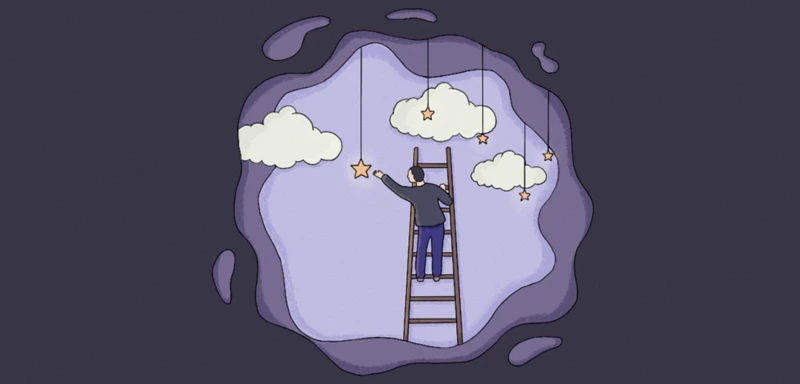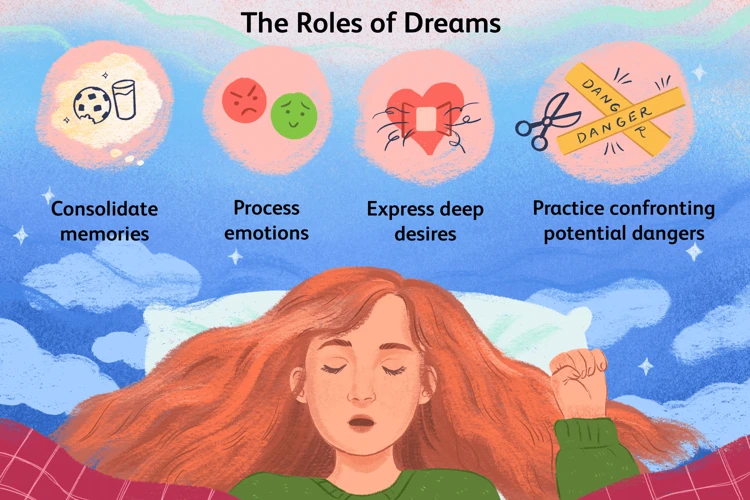The Role of Dreams in Stimulating Innovation and Invention
Have you ever wondered about the mysterious workings of the mind during sleep? Dreams have long captivated and confounded humans, with their strange narratives and surreal imagery. But what if dreams held more than just moments of whimsy? What if they had the power to inspire innovation and drive invention? In this article, we delve into the fascinating world of dreams and explore their role in stimulating innovation and invention. Through historical examples, scientific research, practical applications, and success stories, we uncover the potential of dreams to unlock the doors of creativity and push the boundaries of human achievement. Join us on this journey of discovery as we explore the realm of dreams and their extraordinary influence on our waking lives.
The Power of Dreams

Dreams possess an inexplicable power that goes beyond their nocturnal entertainment value. They have the ability to vividly immerse the dreamer in unique scenarios, emotions, and perceptions that can stimulate the creative process. In dreams, connections are made, ideas are born, and new possibilities emerge. Whether they occur during rapid eye movement (REM) sleep or non-REM sleep, dreams tap into the depths of our subconscious minds, bringing forth fragments of our memories, desires, and fears. They ignite our imagination and push the boundaries of what we believe is possible. Dreams have inspired artists to create masterpieces, musicians to compose mesmerizing melodies, and writers to weave enchanting tales. Their impact on artistic expression is profound and enduring. But beyond the realms of art, dreams also play a crucial role in scientific and technological advancements by providing insights, solutions, and breakthroughs that have the power to shape the world we live in. Through dreaming, we tap into a wellspring of creativity and innovation that lies dormant within us, waiting to be unleashed.
Historical Examples

Dreams have played a significant role in historical examples of innovation and invention, leaving a lasting impact on the trajectory of human progress. Take, for instance, the dream of Elias Howe, the inventor of the sewing machine. In his dream, he saw himself surrounded by cannibals who were brandishing spears with holes near their points. This image sparked his ingenious idea for a machine that could replicate this motion, leading to the invention of the lockstitch sewing machine, revolutionizing the textile industry. Another remarkable example is the dream of German chemist August Kekule, who pondered the structure of the benzene molecule for years without success until one day, in a dream, he saw a snake biting its own tail, revealing to him the circular structure of benzene, which became the foundation for organic chemistry. These historical accounts demonstrate the power of dreams in providing sudden revelations and insights that propel scientific and technological breakthroughs. Dreams have the ability to inspire and guide inventive minds, serving as a wellspring of creativity and innovation.
1. Dream of the Sewing Machine
The dream of the sewing machine is a historical example that exemplifies the incredible power of dreams to inspire innovation. In the early 19th century, Elias Howe, an American inventor, was struggling to find a solution to a crucial mechanical problem in his quest to create a more efficient sewing machine. Frustrated and at a loss, Howe turned to his dreams for inspiration. One night, he dreamt that he was taken prisoner by a group of cannibals who were waving spears that had holes in the tips. This dream provided the breakthrough idea that would ultimately lead to the invention of the sewing machine. Inspired by the dream, Howe realized that if he could create a needle with a hole at the pointed end, it would be possible to automate the sewing process. This dream-inspired idea revolutionized the textile industry, making mass production of clothing a reality. Through this extraordinary example, we can see how dreams have the ability to provide creative solutions to complex problems. They serve as a wellspring of inspiration, offering insights and perspectives that may not be accessible through conscious thought alone. This real-life story showcases the profound influence that dreams can have on innovation and invention, showing that there is tremendous value in exploring the power of dreams as a source of inspiration and sparking creative thinking.
2. Discovering the Structure of Benzene
In the realm of science, dreams have played a significant role in monumental discoveries. One such example is the . In the late 19th century, the German chemist August Kekulé was puzzled by the arrangement of atoms in the benzene molecule. Despite extensive research, he couldn’t determine the molecule’s structure. However, while dozing off one evening, Kekulé experienced a dream-like trance where he saw a vision of a group of snakes intertwining. This vivid dream served as a breakthrough moment for Kekulé, as he hypothesized that the structure of benzene consisted of a ring of six carbon atoms joined together, resembling the snakes he saw in his dream. This idea revolutionized the field of organic chemistry, laying the foundation for aromatic compounds and providing new insights into the nature of chemical bonding. Kekulé’s dream-inspired revelation led to a deeper understanding of benzene and paved the way for further exploration in the field of chemistry. It serves as a powerful testament to the potential of dreams to spark innovation and scientific breakthroughs.
The Science Behind It

Understanding the science behind the power of dreams is essential to unraveling their role in stimulating innovation and invention. Research has shown that during sleep, our brains continue to actively process information, consolidate memories, and make new connections. One intriguing aspect is the activation of the brain’s associative networks, which allow seemingly unrelated ideas and concepts to merge and give birth to novel solutions. Additionally, during REM sleep, a stage characterized by vivid dreaming, there is evidence of incubation and problem-solving, where the unconscious mind wrestles with challenges faced during wakefulness. This process can lead to unique insights and creative breakthroughs. Dreams have been found to enhance creativity and divergent thinking, enabling individuals to explore multiple perspectives and generate a wide range of ideas. This boost in cognitive flexibility can be a driver of innovation, as it allows for the exploration of unconventional approaches and the ability to connect disparate pieces of information. The science behind dreams illuminates their profound impact on our cognitive processes and showcases their potential to fuel innovation and invention.
1. Activation of the Brain’s Associative Networks
The activation of the brain’s associative networks during dreams is a fascinating phenomenon. When we dream, our brain forms connections and associations between seemingly unrelated information stored in our memory. This process allows disparate ideas and concepts to fuse together, leading to the formation of novel and creative thoughts. The brain’s associative networks are responsible for linking different neural pathways, facilitating the integration of diverse knowledge and experiences. This network activation during dreams enables us to make unique connections that we may not have consciously thought of while awake. As a result, we are able to approach problems from new perspectives and generate innovative solutions that may have eluded us in our waking state. This process of associative thinking during dreams is a key component in the creative problem-solving that can lead to groundbreaking inventions and innovative ideas. The power of activating these networks, even during our unconscious state, highlights the profound influence dreams can have on stimulating our innovative thinking processes.
2. Incubation and Problem-solving during REM Sleep
During REM sleep, our brain undergoes a fascinating process known as incubation, which contributes to problem-solving and creative thinking. As we sleep, our brain continues to work on the challenges and problems we encountered during our waking hours. It consolidates information, forms new associations, and restructures memories to create novel connections and insights. This incubation period allows our subconscious mind to work on complex problems without the limitations and distractions of conscious thought. Research has shown that during REM sleep, the brain’s neural networks are highly active, making connections between seemingly unrelated information. This process of network activation enhances our ability to engage in divergent thinking, enabling us to generate innovative solutions and ideas. It is during this phase of sleep that breakthroughs often occur, where seemingly insurmountable obstacles are overcome, and new paths forward are illuminated. By harnessing the power of REM sleep and understanding its role in problem-solving, individuals can tap into their subconscious reservoirs of knowledge and creativity to find innovative solutions to complex challenges.
3. Enhanced Creativity and Divergent Thinking
Enhanced Creativity and Divergent Thinking go hand in hand when it comes to the power of dreams. During sleep, the brain transcends the confines of conscious thinking, allowing ideas and connections to form freely. Dreams have been shown to stimulate a phenomenon known as divergent thinking, which involves generating multiple solutions and ideas to a problem. This cognitive process is crucial for innovation and creativity as it fosters the exploration of unconventional paths and encourages the breaking of traditional thought patterns. In dreams, our minds are free from the constraints of logic and societal norms, enabling us to think outside the box and make novel associations. This heightened state of creative thinking can lead to innovative solutions in various fields, such as science, technology, and design. It is through this divergent thinking that dreamers have come up with groundbreaking inventions, scientific theories, and artistic creations. The unique perspectives gained in dreams serve as a catalyst for brilliant ideas, fueling the flames of innovation and pushing the boundaries of what is possible. The godfather of psychoanalysis, Sigmund Freud, recognized the creative potential of dreams, stating that they provide glimpses into the unconscious mind where desires, repressed thoughts, and unresolved conflicts reside. By tapping into this rich source of inspiration, individuals can unlock their creative potential and embark on a journey of invention and discovery.
Practical Applications

Dreams are not just fleeting moments of imagination; they can be harnessed for practical use in innovation and invention. One practical application is the use of dream journals and analysis for inventors. Keeping a record of dreams and analyzing their themes and symbolism can help inventors tap into their subconscious minds and uncover new ideas and solutions. Another technique is dream incubation, where specific problems or questions are presented to the mind before sleep, with the hope that dreams will provide insights and answers. Additionally, incorporating dream-inspired ideas into the innovation process can lead to novel and groundbreaking concepts. Dreaming allows us to tap into a wellspring of creativity and problem-solving that can fuel innovation and drive human progress.
1. Dream Journals and Analysis for Inventors
Dream Journals and Analysis for Inventors are powerful tools that harness the potential of dreams to fuel innovation and invention. Keeping a dream journal allows inventors to capture the fleeting insights and ideas that arise during sleep. By recording these dreams upon awakening, inventors can preserve the details and emotions associated with them. This practice not only improves dream recall but also helps identify patterns, themes, and recurring symbols. Analyzing the content of these dreams enables inventors to extract potential solutions and inspiration that can be applied to real-world problems. For instance, a dream about a complex systems diagram might trigger a breakthrough in designing a more efficient network architecture. By systematically reviewing and analyzing dream journals, inventors can uncover hidden connections and find fresh perspectives that lead to innovative solutions. This process is akin to mining for treasure in the depths of the subconscious mind, where unexpected gems of knowledge and creativity reside. Additionally, incorporating dream analysis techniques, such as exploring dream symbolism and drawing parallels to waking life, can further enhance the insights gained from dream journals. By embracing the power of dreams, inventors can tap into an abundant source of inspiration to drive their inventive pursuits.
2. Dream Incubation Techniques
Dream incubation is a powerful tool that can be harnessed to direct the content and focus of our dreams towards specific problems or goals. By setting intentions before sleep, we can prime our subconscious mind to work on particular challenges during the dreaming state. One technique is to write down the problem or question we want to solve on a piece of paper and place it under our pillow or beside our bed. This act of intention-setting sends a clear signal to our mind that we want to receive insights or ideas related to the specified issue. Another method is visualization, where we mentally rehearse the problem or desired outcome before sleep, allowing our mind to process and explore potential solutions throughout the night. Some individuals also find it helpful to engage in relaxation exercises or meditation before bed, creating a calm and receptive mental state for dream incubation. By employing these dream incubation techniques, we tap into the power of our dreams to actively participate in problem-solving and innovation. It’s important to keep a dream journal nearby upon waking to record any insights, images, or symbols that arise during the dream incubation process. These recorded dreams can provide valuable information and serve as stepping stones for further exploration and inspiration in the waking world.
3. Incorporating Dream-inspired Ideas into Innovation Processes
Incorporating dream-inspired ideas into innovation processes has gained recognition as a valuable approach to problem-solving and product development. It involves mining the depths of our dream experiences for innovative insights and translating them into tangible solutions. By taking note of the themes, images, and emotions present in our dreams, innovative thinkers can uncover new perspectives and alternative approaches to challenges. Dreams provide a unique vantage point that allows us to break free from conventional thinking and explore uncharted territory. It’s crucial to create an environment that encourages individuals to share their dream experiences and openly discuss the connections between their dreams and potential applications. This collaborative approach fosters a culture of innovation and enables diverse perspectives to come together in a synergistic manner. Organizations can facilitate regular brainstorming sessions where dream-inspired ideas are welcomed and explored. This not only taps into the unexpected insights dreams provide but also boosts employee engagement by valuing their creative contributions. By incorporating dream-inspired ideas into innovation processes, organizations can harness the untapped potential of the subconscious mind and unlock a powerful source of innovation and creativity.
Success Stories

In the realm of innovation and invention, several success stories stand as remarkable testaments to the power of dreams. First, we have Elias Howe’s dream of the sewing machine, where he envisioned a needle with an eye at the pointed end, leading to the invention of a landmark device that revolutionized the textile industry. Then, there is the iconic story of Kekule’s dream of the benzene ring structure, which unraveled the mystery behind this fundamental compound and laid the foundation for organic chemistry. Additionally, Larry Page’s dream of a large-scale search engine inspired the creation of Google and its groundbreaking PageRank algorithm, transforming the way we navigate and access information. These success stories demonstrate how dreams can serve as catalysts for brilliant ideas, sparking the imagination of inventors and propelling them towards game-changing breakthroughs. The creative insights that emerge during sleep have the potential to shape the course of history by pushing the boundaries of what is possible and driving innovation forward.
1. Elias Howe’s Dream of the Sewing Machine
Elias Howe’s Dream of the Sewing Machine is a remarkable example of how dreams can spark incredible inventions. In the mid-19th century, Howe faced a significant challenge in designing a mechanism that would enable a machine to stitch efficiently. Frustrated with his lack of progress, he found himself embroiled in financial and personal struggles. One fateful night, he had a vivid dream where he was taken prisoner by a group of warriors armed with spears. To his surprise, the spears had holes in their points. This peculiar sight inspired Howe, as he realized that by utilizing a similar concept, he could design a needle with an eye near its point. This revolutionary idea would allow for easier insertion of the thread, resulting in a more efficient sewing machine. Elias Howe’s dream became the catalyst for the invention of the sewing machine, transforming the textile industry and revolutionizing the way we approach garment production. His visionary breakthrough serves as a testament to the profound influence that dreams can have on human innovation and progress.
2. Kekule’s Dream of the Benzene Ring Structure
German chemist August Kekule’s dream of the benzene ring structure is a remarkable example of how dreams can lead to major scientific breakthroughs. In the mid-19th century, the structure of benzene, a simple yet puzzling molecule, eluded chemists. Kekule spent years trying to unravel its mystery through traditional analytical methods, but to no avail. One evening, tired and frustrated, he fell into a daydream where he saw atoms swirling and linking together like a snake biting its own tail. This vision provided the crucial insight he needed. Kekule’s dream revealed to him the cyclic arrangement of carbon atoms in benzene, a groundbreaking concept at that time. Upon waking, he immediately recognized the significance of his dream and quickly formulated his theory of the benzene ring structure. This dream-inspired revelation revolutionized organic chemistry and laid the foundation for the development of aromatic compounds. Kekule’s dream serves as a testament to the power of the subconscious mind and its ability to unravel complex problems that elude rational thinking alone. It highlights the importance of embracing unconventional avenues of thought and paying attention to the insights that come to us in the realm of dreams.
3. Google’s PageRank Algorithm and Larry Page’s Dream
In the realm of technology and innovation, dreams have played a pivotal role in shaping groundbreaking advancements. One such remarkable example is the story behind Google’s PageRank algorithm. It was in the late 1990s when Larry Page, one of Google’s co-founders, had a visionary dream that would ultimately revolutionize the way we search for information on the internet. In his dream, Page envisioned a system that would rank web pages based on their relevance and importance. This dream served as the catalyst for the development of the PageRank algorithm, which became the foundation of Google’s search engine.
The PageRank algorithm, named after Larry Page himself, operates on the principle that the importance of a web page is determined by the number and quality of other pages that link to it. This innovative approach to search rankings propelled Google to become the dominant search engine worldwide. The dream-inspired concept of PageRank allowed Google to provide more accurate and relevant search results, setting the stage for the future of online information retrieval.
What makes the connection between Larry Page’s dream and the PageRank algorithm even more fascinating is the element of intuition and subconscious problem-solving. Dreams have the ability to tap into our unconscious minds, where complex problems can be solved through unexpected connections and insights. It was during slumber that Page’s subconscious mind effortlessly synthesized the concept of ranking web pages based on their link structures.
This extraordinary example of how a dream transformed into a powerful technological innovation highlights the profound influence dreams can have in the realm of invention and entrepreneurship. It serves as a testament to the untapped potential that lies within our dreams, waiting to be harnessed and transformed into real-world solutions. Through dreaming, our minds are capable of delving into uncharted territories and unlocking the secrets that drive innovation forward.
Future Possibilities
As we continue to delve into the fascinating realm of dreams and their impact on innovation, it becomes evident that the future holds endless possibilities for their integration into various fields. One exciting prospect is the potential application of virtual reality (VR) in exploring and harnessing the power of dreams. Imagine a world where individuals can step into a simulated dream environment, allowing them to interact with and manipulate the content of their dreams in a waking state. This immersive experience could provide a deeper understanding of the subconscious mind and unlock hidden insights.
Additionally, advancements in neuroscience and brain-computer interfaces may enable us to actively record and analyze dreams in real-time. By decoding the neural patterns associated with different dream elements, it may be possible to create a dream dictionary of sorts and gain a deeper understanding of the symbols and meanings that arise during slumber. This knowledge could be used to aid problem-solving, enhance creativity, and potentially even predict future trends or events.
With the rise of artificial intelligence (AI) and machine learning, there is the potential to develop algorithms that can analyze dream content on a vast scale. These algorithms could identify patterns, themes, and connections within dreams that may elude human observers. This data-driven approach to dream analysis could pave the way for new insights and innovations in a range of fields, from psychology and neuroscience to business and technology.
Lastly, as our understanding of dreams continues to evolve, we may see dream-inspired technologies emerge. Just as dreams have inspired inventions throughout history, they may provide the seeds of inspiration for future breakthroughs. By tapping into the imaginative and insightful nature of dreams, inventors and innovators can push the boundaries of human achievement and create solutions to some of society’s most pressing challenges.
The future possibilities for harnessing the power of dreams are vast and exciting. From virtual reality to neuroscientific advancements and AI analysis, we are poised to unlock the true potential of dreams as a source of innovation and invention. As we continue to explore and unravel the mysteries of the dreaming mind, we may find ourselves on the cusp of a new era of creativity and discovery.
Conclusion
In conclusion, dreams are not mere figments of our imagination or fleeting moments of escapism. They hold a remarkable power to stimulate innovation and invention. From historical examples showcasing the impact of dreams on the creation of revolutionary inventions, to scientific research uncovering the mechanisms behind dream-induced problem-solving and creativity, it is clear that dreams have a significant role to play in the realm of innovation. Moreover, practical applications such as dream journals and analysis, dream incubation techniques, and the incorporation of dream-inspired ideas into innovation processes provide tangible ways to harness the potential of dreams. The success stories of individuals like Elias Howe, August Kekule, and Larry Page further emphasize the immense possibilities that can arise from harnessing the power of dreams. As we continue to explore the mysteries of the dreaming mind, it is evident that dreams are not only fascinating experiences, but also valuable sources of inspiration and insight. By embracing and exploring our dreams, we open ourselves up to a world of boundless creativity, offering a pathway to untapped potentials and innovative solutions. So, next time you close your eyes and drift off to sleep, remember that within the realm of dreams lies the key to unlocking the doorways of innovation and the potential to shape a better future.
Frequently Asked Questions
1. Can dreams really stimulate innovation and invention?
Yes, dreams have been recognized as a powerful catalyst for innovation and invention throughout history. They have the ability to generate unique insights, spark creative thinking, and solve complex problems.
2. How do dreams contribute to the creative process?
Dreams tap into our subconscious mind, where ideas and connections are formed. They can provide alternative perspectives, fresh combinations of thoughts, and imaginative solutions that we may not have considered while awake.
3. Are there any famous inventions or discoveries inspired by dreams?
Absolutely! The sewing machine, the structure of benzene, and even Google’s PageRank algorithm are just a few examples of groundbreaking ideas that were inspired by dreams.
4. Are all dreams equally impactful in stimulating innovation?
No, not all dreams are equally impactful in stimulating innovation. It’s the vivid, memorable dreams that tend to leave a lasting impression and have a greater potential to spark innovative thinking.
5. Do dreams have to be lucid for them to have an impact on innovation?
No, dreams do not have to be lucid for them to have an impact on innovation. Both lucid and non-lucid dreams can offer valuable insights and foster creative thinking.
6. How can keeping a dream journal help in the innovation process?
A dream journal allows inventors and innovators to capture and analyze the details of their dreams. By recording dreams consistently, patterns and recurring themes may emerge, leading to new ideas and innovative solutions.
7. Are there techniques to incubate specific dreams related to innovation?
Yes, there are techniques such as visualization exercises, affirmations, and setting intentions before sleep that can increase the likelihood of dreaming about specific topics or problems related to innovation.
8. Can incorporating dream-inspired ideas into the innovation process yield practical results?
Absolutely! History is filled with examples of dream-inspired ideas that have led to practical and impactful innovations. By incorporating dream-inspired ideas into the innovation process, it is possible to unlock new solutions and approaches.
9. Can anyone learn to harness the power of dreams for innovation?
Yes, anyone can learn to tap into the power of dreams for innovation. It requires cultivating an openness to the insights and ideas that emerge during sleep, and actively engaging in practices such as dream analysis and incubation.
10. Are there potential future advancements in dream research?
Definitely! As our understanding of the brain and the science behind dreams continues to evolve, there is immense potential for advancements in dream research. This could lead to even greater insights into the role of dreams in stimulating innovation and invention.








